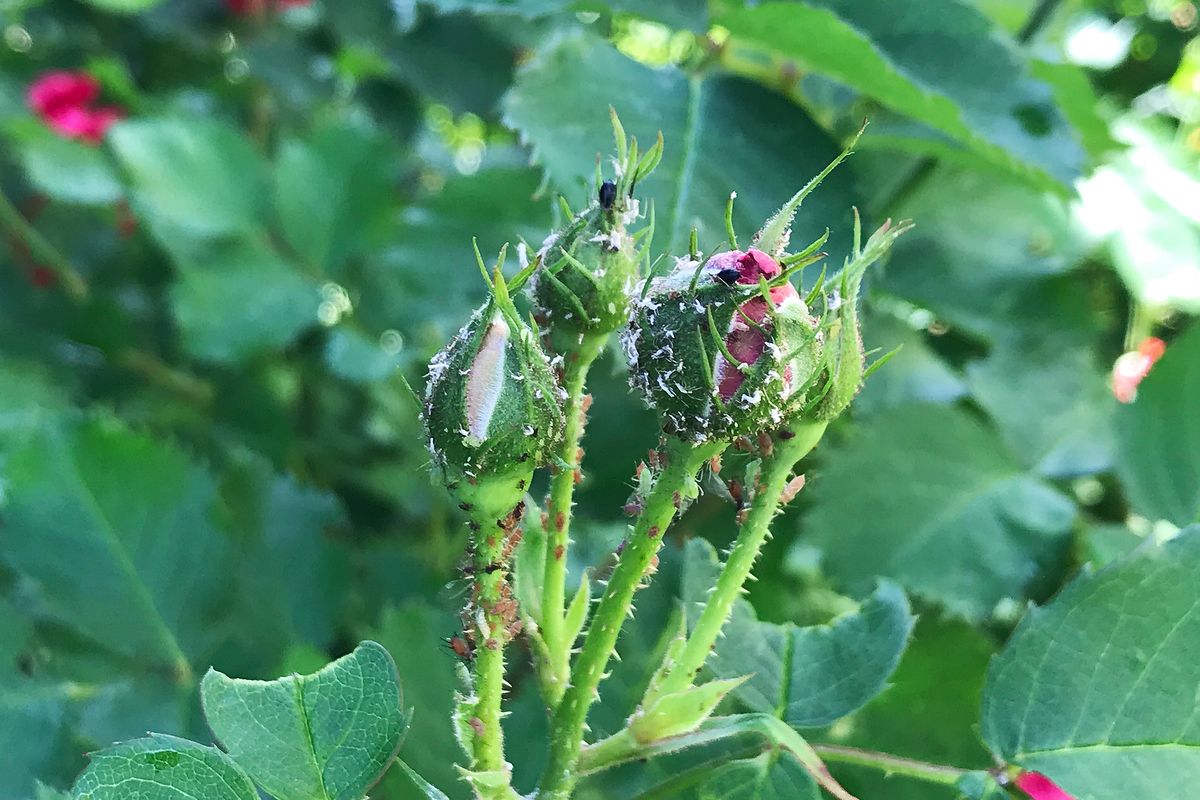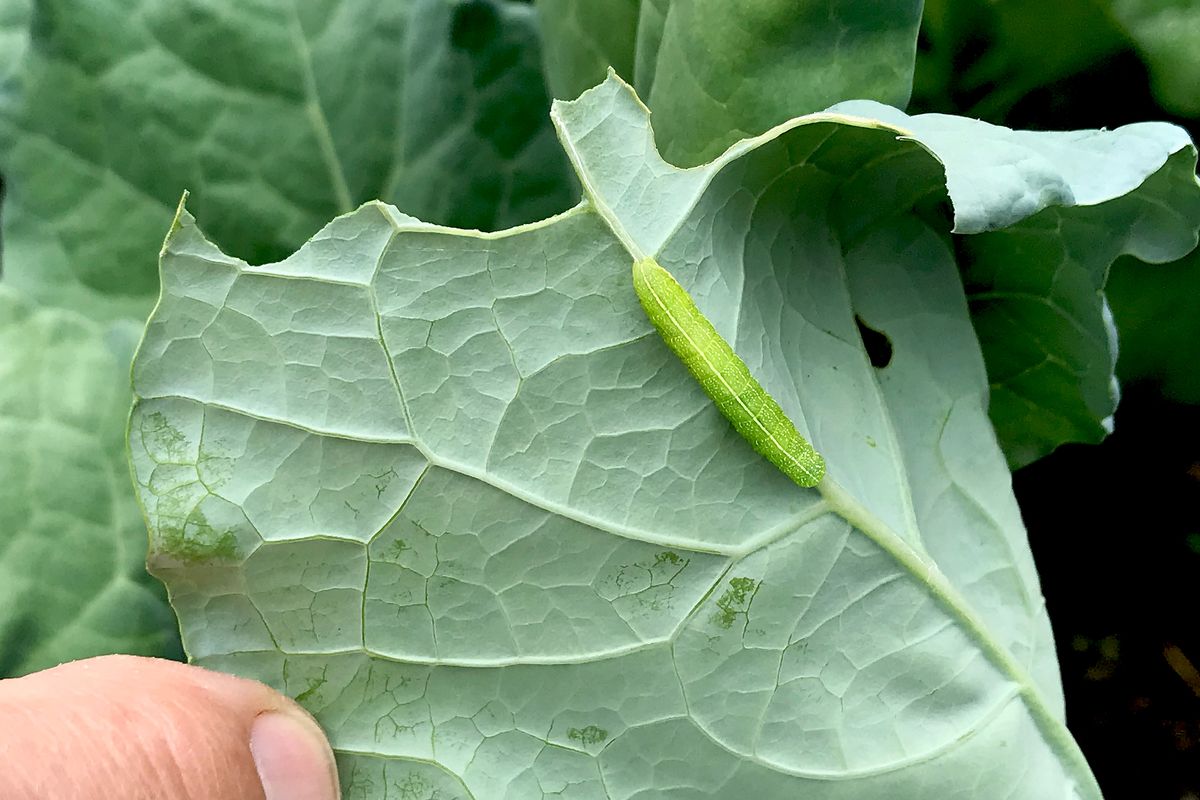In the Garden: Bugs with benefits
Aphids have been a serious problem on roses this year. The tiny white shells are the exoskeletons they shed while going through molts. (SUSAN MULVIHILL/FOR THE SPOKESMAN-REVIEW)Buy a print of this photo
When you plant a garden, you might not realize that bugs are part of the deal. I know many folks wish this wasn’t the case, but both the good guys and the bad guys are necessary for a balanced environment.
Examples of beneficial insects are ladybugs, green lacewings, ground beetles and spiders. Yes, even spiders. I slowly walk through our vegetable garden every day to see which bugs are out and about. If I don’t recognize one, I’ll take a few photos and research it. Most have either been harmless or they prey on aphids and other pests, so I leave them alone.
Speaking of aphids, aren’t they awful this year? I attribute their population boom to our relatively mild winter and wet spring. They haven’t been a problem on my vegetable crops but seem to be enjoying my roses a bit too much.
It’s challenging to deal with aphids and other insects organically, but I’m committed to going that route for every obstacle that presents itself.
One of the tried-and-true methods for aphids is to use a hose to spray them off plants. Research has shown they won’t climb back up. Another option is to squish them.
The only veggies that aphids traditionally bother in my garden are cabbage family crops such as broccoli, cabbage, cauliflower, kale, kohlrabi and rutabagas. Since none of these crops needs to be pollinated, I place hoops and floating row cover over them as soon as I plant the seeds or seedlings. The cover becomes a physical barrier that keeps those horrid little insects away.
Slugs have also been annoying this season. These nocturnal critters are technically mollusks. Their favorite plants are lettuce, spinach, beets, Swiss chard and cabbage family crops. There are two simple ways of controlling them.
The first involves sprinkling organic slug bait on the soil near the plants they’re bothering. Organic bait contains iron phosphate and a bit of bran to entice slugs to eat. As soon as they consume some, they stop feeding and wander off to die. Always choose organic over nonorganic baits because the latter contain metaldehyde, which is toxic to dogs and cats. Beer traps are the other simple method for controlling slugs. Start with an empty tuna or cat food can. Dig a small hole and place the can so the lip is even with the soil surface. Pour an inch or so of beer into the can. Slugs are attracted to the scent of yeast, come for a sip, fall in and drown.
Cabbage worms are commonly seen in vegetable gardens. They are the caterpillars of the cabbage white butterfly. As you might guess from their name, they love to munch on members of the cabbage family. The worms are pale green and they chew holes in the plants’ leaves. After I plant any member of the cabbage family in the spring, I immediately cover the bed with hoops and either floating row cover or bridal veil netting (tulle). This barrier prevents the cabbage butterflies from laying eggs on the leaves.
If you didn’t use a row cover and you’re seeing those green worms, you have two options. First, you can hand-pick them off the leaves and squish any eggs you spot. Second, you can spray the foliage of the plants with Bt (Bacillus thuringiensis variety kurstaki). This product is widely available at garden centers and contains a soil bacterium that targets the caterpillar stages of insects. After ingesting it, the worms’ digestive system shuts down and they die. Spray only if you have the caterpillars – not just in case you might get them – and avoid spraying near blooming plants.
Last year, earwigs were an awful problem in everyone’s gardens. I haven’t noticed any issues with them so far this year. Earwigs are generally nocturnal and hide in dark, moist areas during the day. They chew large holes in leaves and are attracted to soft fruits such as apricots, peaches and plums. Despite these transgressions, it’s important to understand earwigs are also considered beneficial since they eat aphids, mites and insect eggs.
If they cause significant damage to vegetable plants, set out traps for them. Just like with the beer traps, sink a container in the ground. Empty yogurt or spreadable butter containers with lids work best for this. Cut holes into the lid that are large enough for earwigs to go through. Fill the container with an inch or two of vegetable oil and a splash of soy sauce; replace the lid. Last year, many gardeners told me this mixture worked phenomenally well.
As you can see, there are plenty of organic options for dealing with damaging insects.
Contact Susan Mulvihill at susan@susansinthegarden.com. Take a virtual tour of her vegetable garden in this week’s “Everyone Can Grow a Garden” video at youtube.com/susansinthegarden.

